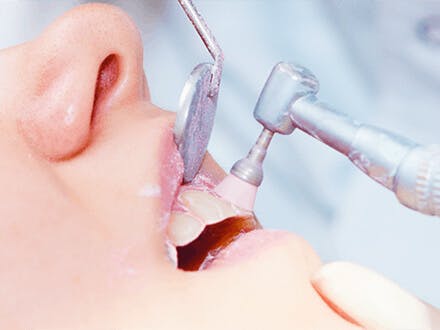It may surprise you to learn that unhealthy gums are very common. In fact, the majority of adults suffer from at least some degree of gum problems, and most of us will experience it at least once during our lives.
But although gum problems are common, it’s important that we don’t take it lightly. Failing to spot and manage the symptoms of a gum problem at its earliest stage (gingivitis) can put you at risk of developing more severe gum conditions, such as periodontitis – a major cause of tooth loss in adults.
And it’s not just our oral health that may be at risk when it comes to developing gum problems. Research has also linked gum problems with more serious health conditions, such as diabetes and heart disease.i
The good news is that gum problems are treatable, with the right oral health routine^. Read on to learn all you need to know about healthy gums – from how to identify gum problems, to how to help keep your gums healthy.
Healthy vs unhealthy gums
Knowing what healthy gums look and feel like will help you keep your gums in good shape and stay on the lookout for any early signs of gum problems.
What do healthy gums look like?
Healthy gums are light pink, firm to the touch, don’t bleed, and keep your teeth securely in place. Unhealthy gums, however, can often be immediately identified by their colour – they are typically red, dark red or even purple^. Unhealthy gums can also be sore, swollen, bleed easily during brushing and flossing, and can start pulling away from your teeth.
It may be helpful to compare your gums with pictures of healthy gums and unhealthy gums for a side-by-side comparison of colour and inflammation. This might give you an idea of what sort of condition your gums are in – but your dentist is the best person to speak to for an official gum problem diagnosis.
You can also take our quick and simple Gum Health Test to check if you’re experiencing signs of unhealthy gums.
Symptoms of gum problems and unhealthy gums
Bleeding gums are one of the first warning signs that you may have gum problems.
If not properly removed with a regular oral health routine^, plaque build-up on your gums and teeth can cause gums to become red, swollen, and prone to bleeding. Unhealthy gums can also cause persistent bad breath.
When caught in these early stages, known as gingivitis, gum problems can be prevented by twice daily brushing and flossing – and periodic check-ins to your dentist for check-ups.
Learn more about the stages of gum problems.
What causes unhealthy gums?
In most cases, poor dental hygiene is at the root of gum problems. If plaque (a sticky, transparent film of bacteria that coats the teeth) is not properly removed with daily brushing and flossing, it can lead to gum problems.
Other risk factors for developing gum problems include:ii, iii
- Smoking and tobacco use
- An unhealthy diet
- Some medical conditions (including type-2 diabetes)
- Stress
How to get healthy gums
Brushing, flossing, and seeing your dentist regularly is the care package you need for preventing and reversing early stage gum problems.
Brushing twice daily with a fluoride toothpaste such as parodontax Daily Fluoride toothpaste is the first step. Specially formulated to help stop bleeding gums by enhancing plaque removal, parodontax is proven to be 4X more effective at removing plaque, the main cause of gum problems*.
*compared to a regular toothpaste with twice daily brushing. Haleon data on file. RH02434, 2015
Keeping your gums healthy
Periodic dental appointments are key to identifying early gum problem symptoms. The quicker problems are identified, the easier it is to resolve gum problem at home by brushing, flossing, and using a daily mouthwash.
Sources:
By clicking any of the links below you will be taken to an external website that is independently operated and not managed by Haleon. Haleon assumes no responsibility for the content on the website. If you do not wish to leave this website, do not click on the links below.
i. Gum Disease Information. American Academy of Periodontology. https://www.perio.org/for-patients/gum-disease-information/. Accessed 6/8/2022.
ii. Gum Disease. MouthHealthy. https://www.mouthhealthy.org/all-topics-a-z/gum-disease/. Accessed 6/8/2022.
iii. Brushing Your Teeth. Mouth Healthy. https://www.mouthhealthy.org/all-topics-a-z/brushing-your-teeth/. Accessed 04/03/20.
iv. Smoking, Gum Disease, and Tooth Loss. Centers for Disease Control and Prevention. https://www.cdc.gov/tobacco/campaign/tips/diseases/periodontal-gum-disease.html. Accessed 06/25/19.
ABOUT GUM PROBLEMS
Explore the articles below to learn more about gum problems, as well as how to help combat and prevent it.



